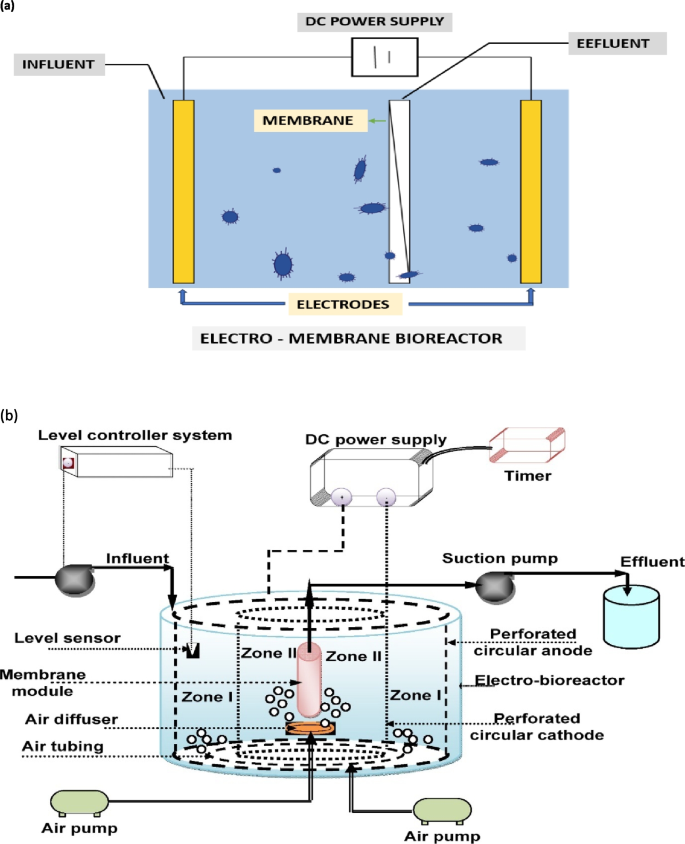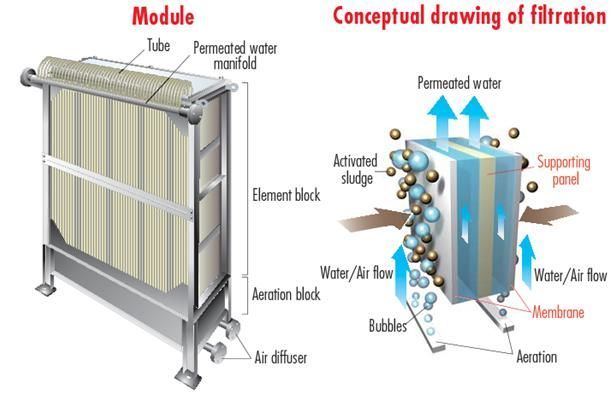The Science Behind Membrane Bioreactor: How It Works and Why It’s Effective
The Science Behind Membrane Bioreactor: How It Works and Why It’s Effective
Blog Article
Just How Membrane Bioreactors Are Changing Water Filtration Equipments
The development of membrane layer bioreactors (MBRs) represents a considerable advancement in the area of water filtration, merging biological therapy procedures with advanced membrane layer filtration modern technologies. This combination not just boosts the high quality of dealt with effluent yet additionally addresses city room restraints, making MBRs specifically suitable for densely inhabited locations. As global water scarcity intensifies, the duty of MBRs in facilitating drinkable water reuse and lasting water administration ends up being significantly crucial. The effects of this technology expand past efficiency-- what opportunities and difficulties lie in advance for its widespread implementation?
Overview of Membrane Bioreactors
Membrane layer bioreactors (MBRs) represent a considerable advancement in water filtration technology, as they combine biological therapy procedures with membrane layer purification. This combination improves the efficiency of wastewater treatment by using microorganisms to break down organic contaminants while simultaneously utilizing semi-permeable membranes to separate cured water from suspended virus and solids.
The MBR system generally is composed of a biological reactor where the microbial population metabolizes contaminants, adhered to by a membrane layer purification device that maintains biomass and permits just clean water to go through. This twin functionality results in greater effluent high quality compared to standard treatment methods. MBRs can be operated in both batch and continuous circulation modes, using adaptability in style and application.
They likewise make it possible for the recovery of water for reuse, therefore adding to water sustainability efforts. Overall, MBRs are at the leading edge of enhancing water treatment performance and high quality, showcasing the capacity for innovative options in ecological management.
Benefits of MBR Modern Technology
The integration of biological treatment with membrane purification uses numerous advantages for water purification procedures. One of the main advantages of Membrane layer Bioreactor (MBR) innovation is its capability to effectively eliminate both not natural and natural impurities, leading to high-grade effluent. The membranes act as a physical barrier, stopping suspended solids and microorganisms from going through, which improves the total safety and security and integrity of cured water.
Furthermore, MBR systems require a smaller impact compared to standard therapy techniques, allowing for much more reliable area use. This small layout is specifically beneficial in urban setups where land is limited. MBRs also show functional versatility, fitting differing influent qualities and circulation prices without significant efficiency destruction.
In addition, the procedure uses enhanced nutrient removal abilities, specifically for nitrogen and phosphorus, which are critical for stopping eutrophication in getting waters. The minimized sludge production connected with MBR innovation likewise equates to lower disposal expenses, making it an economical solution in the future - Membrane Bioreactor. Generally, the benefits of MBR innovation position it as a leading selection for lasting and cutting-edge water purification systems, resolving both ecological and financial worries
Applications in Water Purification
Applications of Membrane Bioreactor (MBR) technology in water purification are impactful and diverse, addressing different treatment needs across several sectors. MBRs successfully combine biological therapy processes with membrane filtering, making them perfect for municipal wastewater treatment, industrial effluent monitoring, and even safe and clean water reuse efforts.
In municipal setups, MBRs are progressively used to boost the high quality of treated wastewater, enabling conformity with stringent discharge regulations and helping with the recycling of water for irrigation and non-potable uses. Their small layout likewise makes them appropriate for urban settings where area is limited.
Industrially, MBR modern technology is made use of to treat process water and wastewater, especially in Resources markets such as food and beverage, drugs, and fabrics. By properly getting rid of impurities and suspended solids, MBRs assist industries reduce ecological effects while recovering important sources from wastewater streams.
In Addition, MBRs are getting grip in decentralized water treatment applications, where small-scale systems can be released in remote locations or establishing areas. This adaptability makes it possible for areas to attain sustainable water administration remedies, boosting access to clean water while decreasing reliance on typical therapy techniques.
Study and Success Stories

In an additional instance, a fabric production facility in Bangladesh embraced MBR technology to address its wastewater difficulties. The system reduced chemical oxygen need (COD) degrees from 1,200 mg/L to much less than 100 mg/L, therefore fulfilling governing standards and dramatically reducing environmental impact.
The College of Cape Community's MBR installment his comment is here has actually shown efficient in treating greywater for non-potable reuse on campus. This job not only conserves drinkable water however additionally serves as an academic design for lasting methods.
Additionally, a seafood processing plant in Norway utilized MBR technology to deal with effluents including high degrees of natural issue, accomplishing over 90% contaminant elimination. These situation researches highlight MBR innovation's versatility and its important role in boosting water quality across diverse applications.
Future of Water Therapy Solutions
As global water scarcity and pollution difficulties escalate, ingenious water therapy remedies are coming to be significantly essential to guarantee lasting access to tidy water. The future of water therapy hinges on the combination of innovative modern technologies that enhance the performance and effectiveness of filtration procedures. Membrane layer bioreactors (MBRs) are at the forefront of this advancement, incorporating biological therapy with membrane layer filtering to generate top notch effluent suitable for numerous applications.

Emerging patterns such as source recovery from wastewater, including nutrients and energy, will certainly better change therapy facilities right into eco-friendly centers. In addition, advancements in nanotechnology and membrane layer products assure enhanced efficiency and longevity of purification systems.

Conclusion
Their role in potable water reuse and sustainable water administration highlights their relevance in addressing international water shortage difficulties. Proceeded study and development will additionally boost the effectiveness and adoption of MBR innovation, ensuring a resistant future for water treatment options.
The introduction of membrane bioreactors (MBRs) represents a significant advancement in the area of water filtration, combining biological therapy processes with cutting-edge membrane layer purification modern technologies. As international water scarcity magnifies, the role of MBRs in promoting potable water reuse and lasting water management ends up being increasingly critical. They additionally enable the recuperation of water for reuse, hence adding to water sustainability initiatives.As worldwide water deficiency and pollution difficulties escalate, innovative water therapy options are becoming increasingly vital to make certain sustainable accessibility to tidy water. Their role in drinkable water reuse and sustainable water management highlights their value in attending to international water shortage challenges.
Report this page